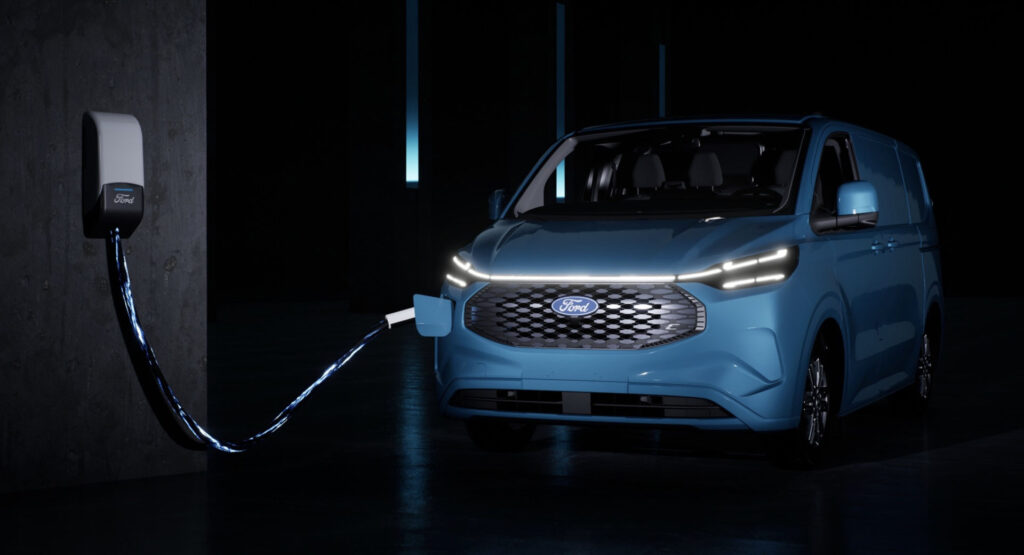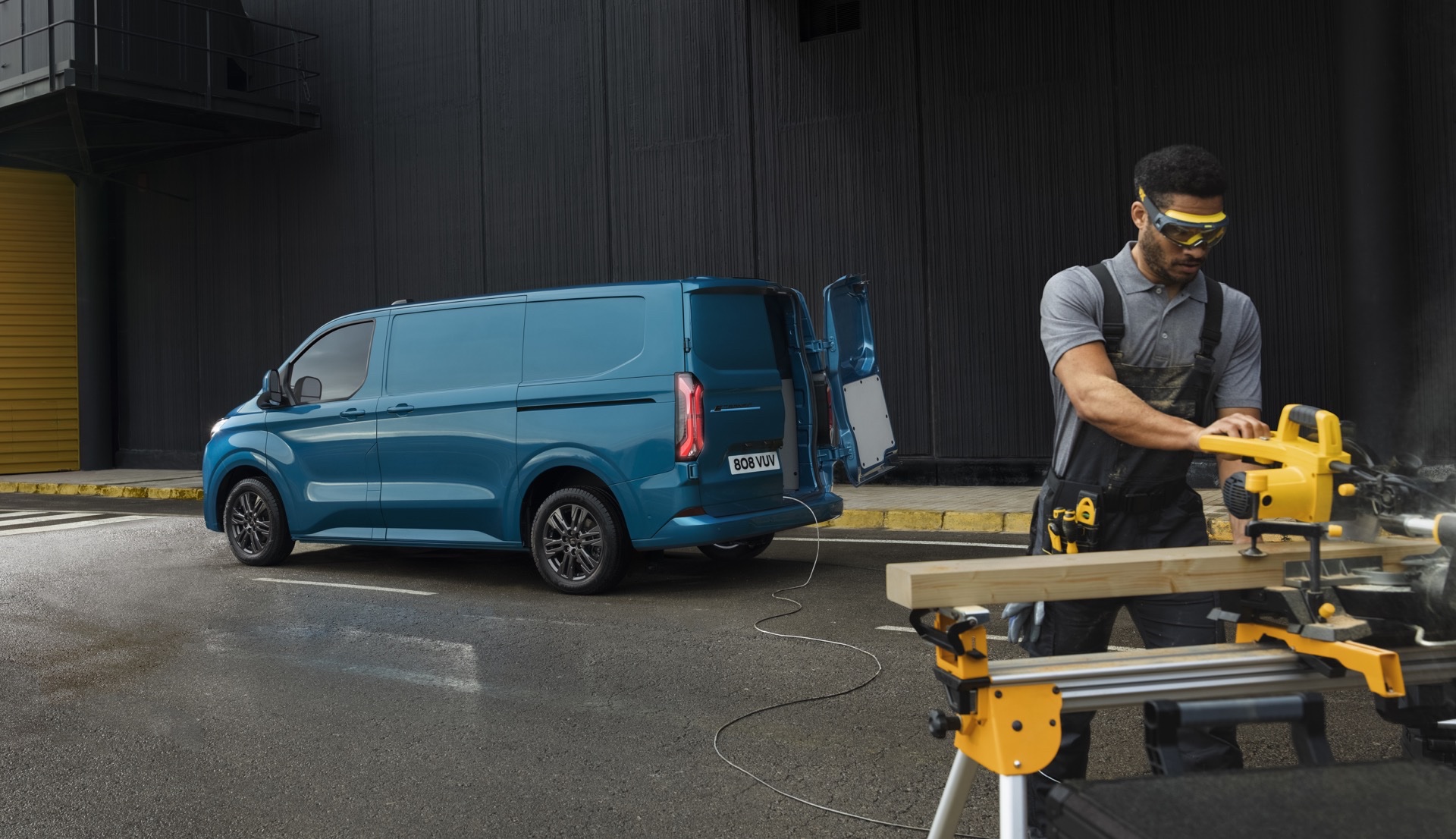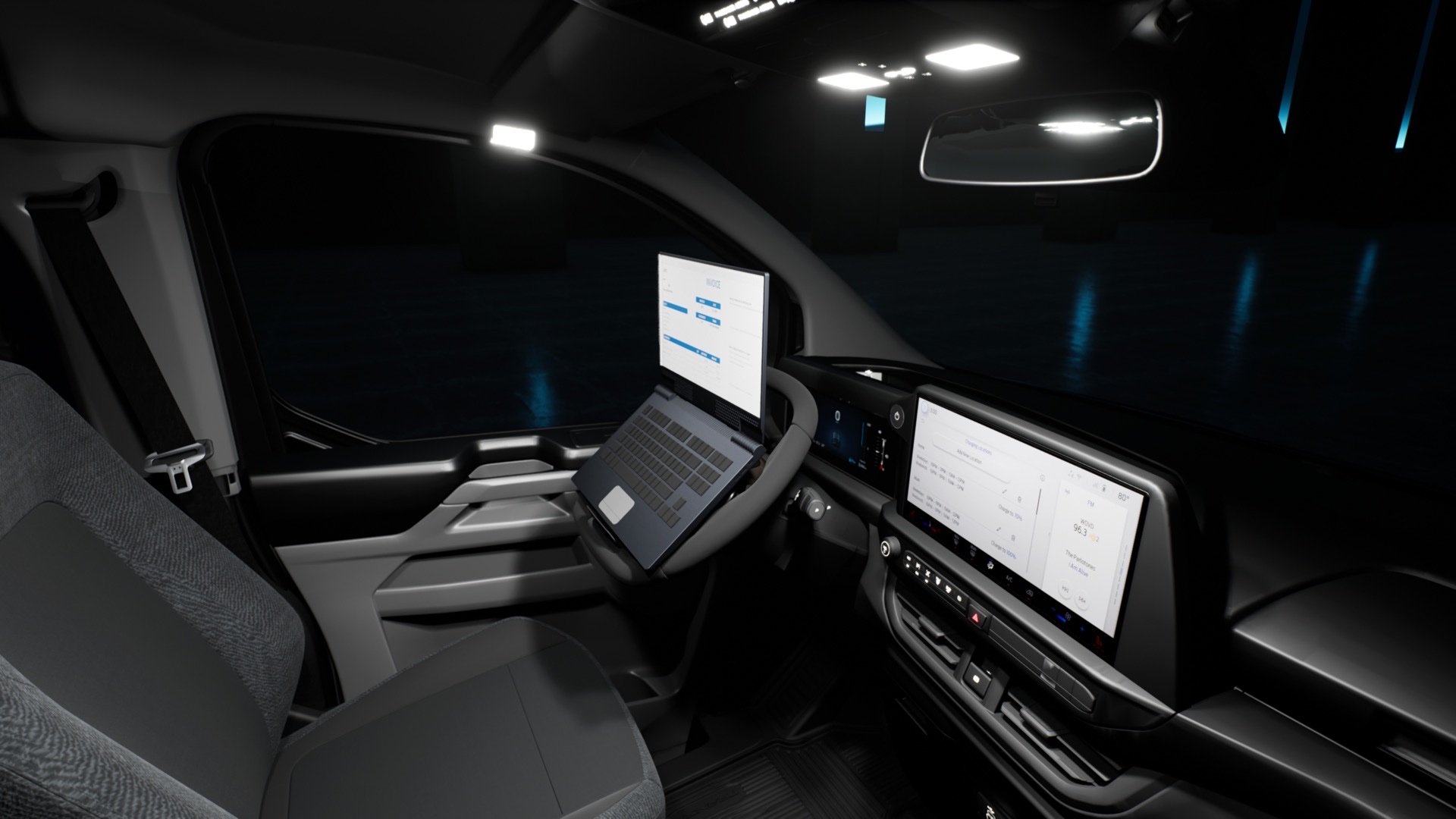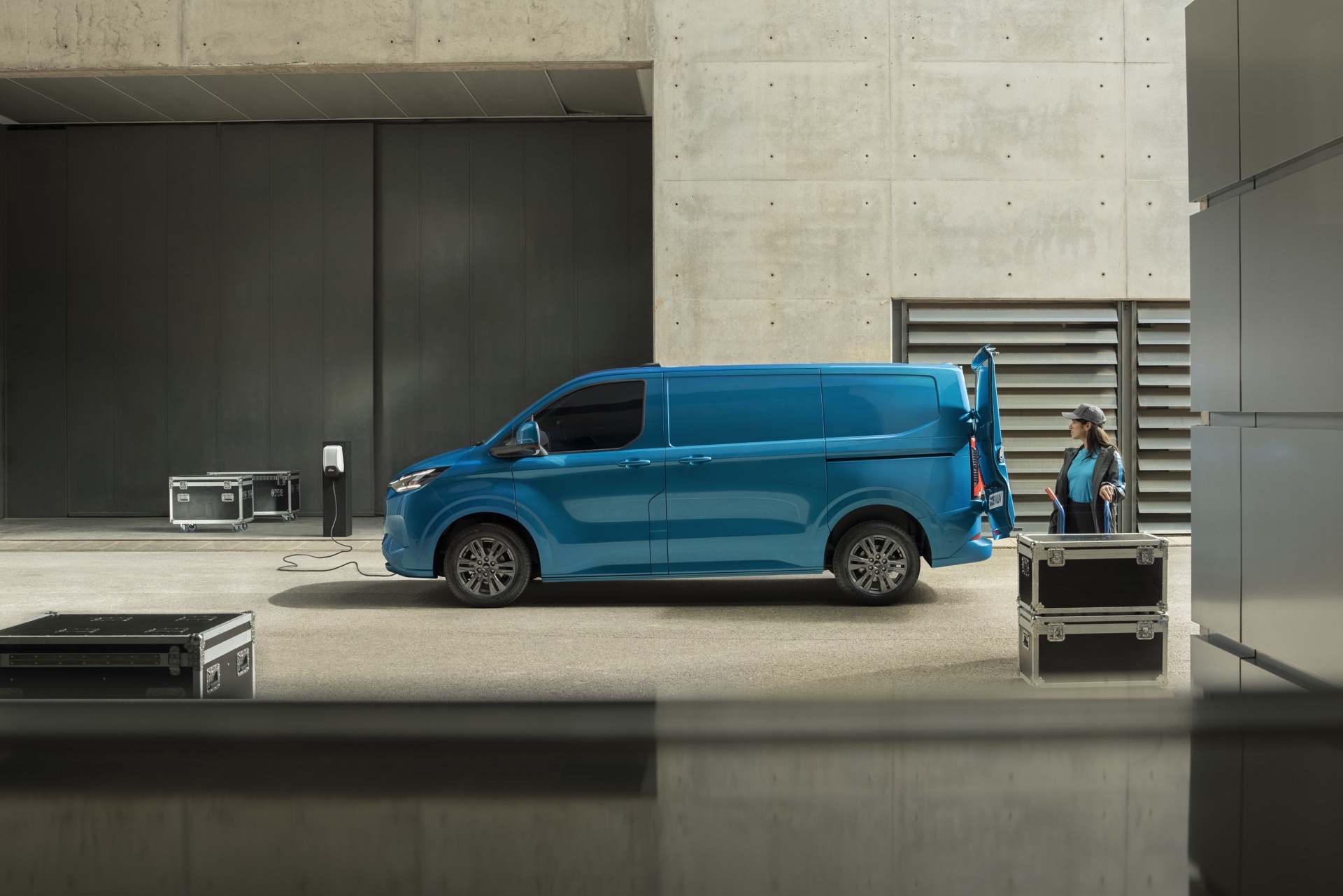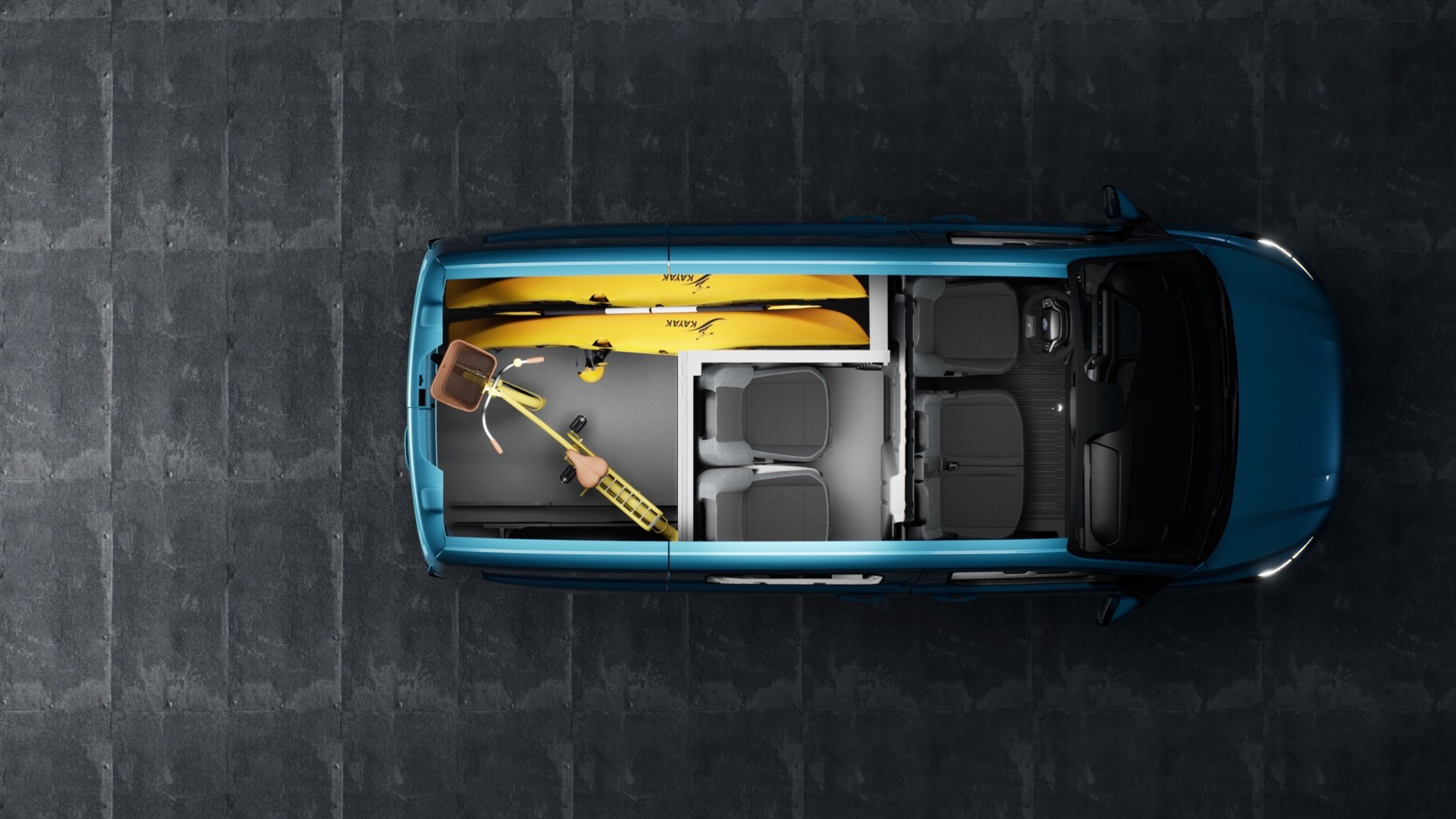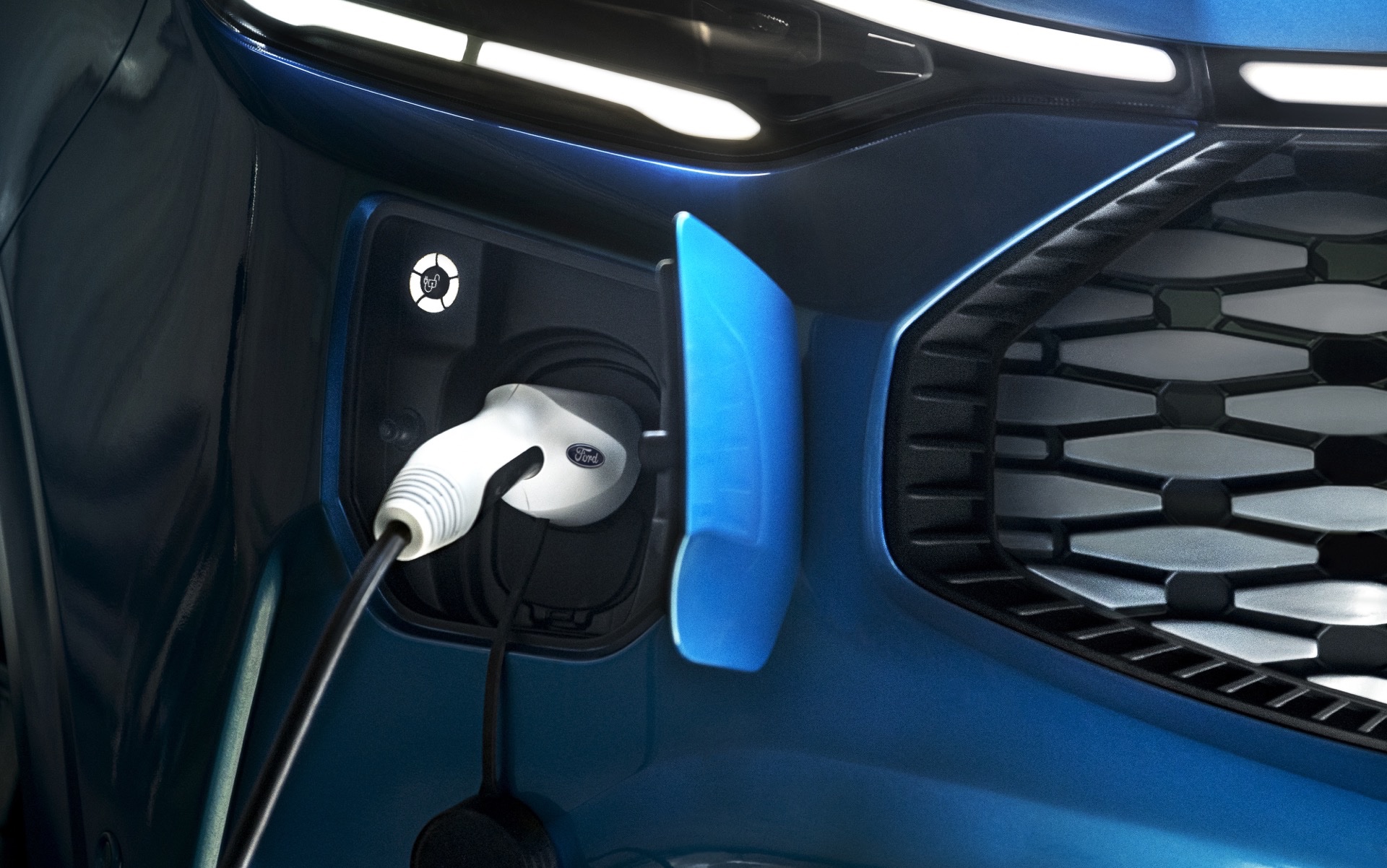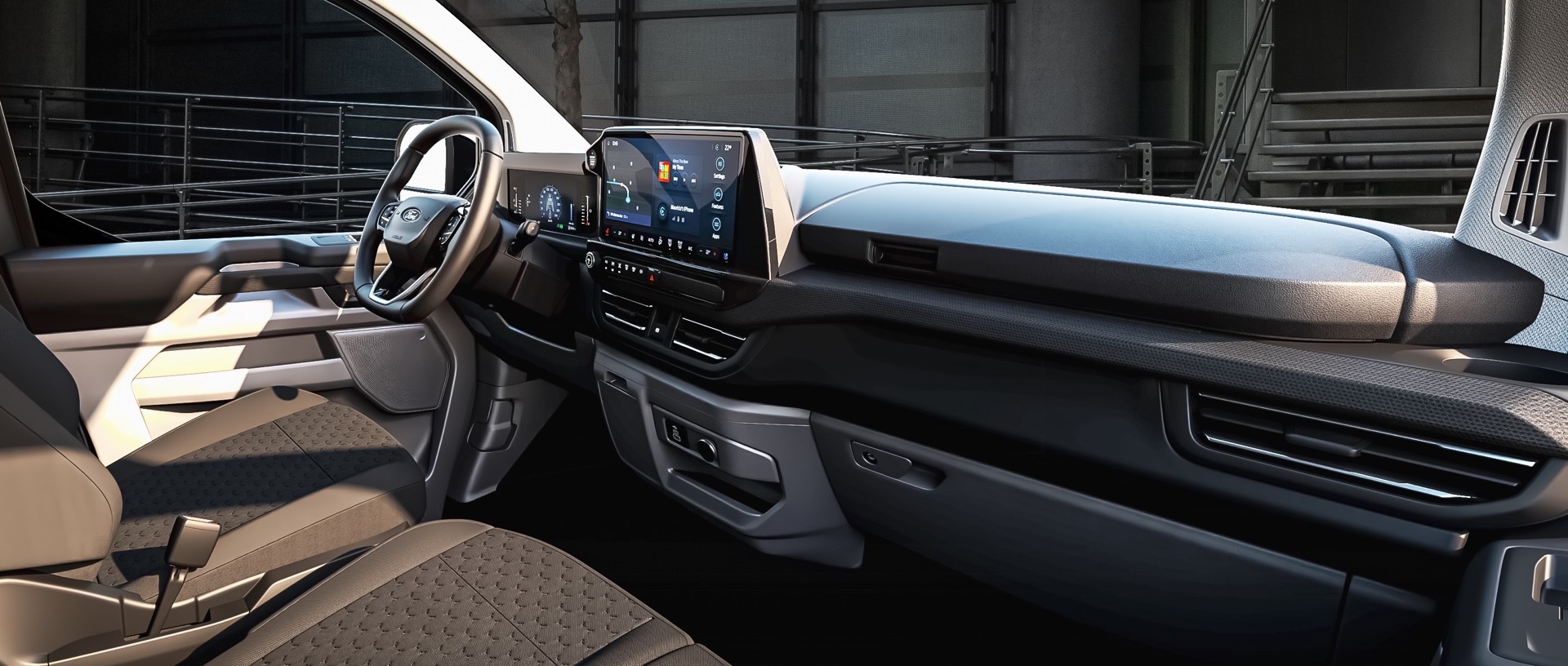Ford has detailed the all-new electric E-Transit Custom, which was revealed earlier this year. The electric van will feature a 74kWh (usable) battery capable of 236 miles (380 km) of range on the WLTP cycle, and up to 214 hp (217 PS / 160 kW) and 415 Nm (306 lb-ft) of torque.
The E-Transit Custom is set to go into production in Fall 2023 at Ford’s plant in Turkey, following an investment of $2 billion. It is the second of four all-electric vehicles in the works from Ford Pro, the brand’s recently created commercial vehicles division.
Designed For Small And Medium Enterprise Owners
The E-Transit Custom follows on from the full-sized E-Transit, while also being billed as an all-electric successor to Europe’s best-selling van. Ford claims to have built the Custom from the ground up and includes learnings from small and medium-scale businesses that the company hopes will adopt the new EV.
Such features include a Mobile Office option pack, which includes a tilting steering wheel that can be used as a stand for laptops or tablets. Also included are a flat-topped table for meals or writing and dimmable LED lighting, presumably to get you in the mood for business.
Meanwhile, the Delivery Assist feature aims to aid drivers making multiple stops in a day, and streamlines the process of getting out of the van on a tight schedule. When activated, if park is selected the EV will automatically activate the hazard lights, close any open windows, and lock the door once the driver leaves the van.
And as found on the E-Transit, ProPower Onboard can be used by tradespeople, offering up to 2.3 kW through sockets in the cab and load area, enabling the E-Transit custom to be used as a large battery to run tools off of.
Maximized Space And Carrying Capacity
Designing the E-Transit Custom as a load-lugging hero had to be done while accommodating the not insignificantly-sized battery pack.
To do so, Ford engineers integrated the battery into the load floor above the sill flange, with other underbody parts being made to fit around the battery to save weight and space. Contributing to these space-saving measures is the addition of an independent semi-trailing arm rear suspension, which also improves comfort and handling.
This has resulted in the E-Transit Custom’s load floor being lower than the outgoing Transit Custom, while the overall height of the EV remains under two meters to allow it access to height-restricted car parks.
See Also: Ford Transit Custom Camper Spied Testing
The E-Transit Custom in panel van configuration offers load volumes from 5.8 to 9.0 m3, with a payload up to 1,100 kg (2,425 lb), which is 126 kgs shy of what an Opel Vivaro-e can manage, a towing capacity of 2,000 kg (4,409 lbs), and a maximum load length of 3,450 mm (135 in). The E-Transit Custom will also be offered in double-cab-in-van and kombi body styles, as well as with short and long wheelbase options and low or high roof configurations.
A separate L-shaped bulkhead will also be available, allowing seating for five occupants and a section of the load area designed to accommodate longer objects.
Extending Range
Perhaps more pertinent to those who use their EVs as tools for work than car buyers who simply need them to get from A to B, the range of an electric van is going to be crucial to any potential buyer.
Ford has achieved what it set out to do with a WLTP-estimated range of 236 miles (380 km). This beats most competitors, including the Opel Vivaro-e‘s 205 miles (320 km) (and its other Stellantis clones), the Volkswagen ABT e-Transporter’s 82 miles (131 km), and the Mercedes-Benz eVito’s 162 miles (260 km).
To do so, Ford engineers paid special attention to packaging, materials, and weight while doing what they could to improve efficiency. The results of this are evidenced in a body shape that is 10 percent more slippery through the air, thanks to a flat floor, unique honeycomb grille, and aerodynamic wheel designs. Even the rear light cluster was selected for its aerodynamic properties, with over 800 designs being developed.
Read: Maximum Attack — Ford Pro Electric SuperVan
Also helping in energy saving is the inclusion of a vapor-injected heat pump for the first time in an electric vehicle. You’ll find the same one-pedal driving tech that is found in the Ford Mustang Mach E, in an effort to optimize energy harvesting. In addition, owners can program the E-Transit Custom’s battery and cab to be warmed or cooled before work with Scheduled Pre‑Conditioning to conserve energy for optimum range.
The E-Transit Custom will come in two states of tune: either a 133 hp (136 PS / 100 kW) motor or the top-spec 214 hp (217 PS / 160 kW) option. Both output options share the same 415 Nm (306 lb-ft) of torque.
The E-Transit Custom supports fast charging up to 125 kW for a 15-80 percent recharge in 41 minutes. European buyers will also be able to take advantage of the Blue Oval charging network, with a 12-month complimentary subscription offered.
In terms of minimizing downtime, the E-Transit will be available with schedulable OTA updates, while each vehicle will be available with an eight-year 160,000 km warranty.




